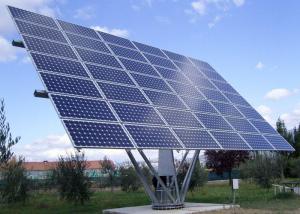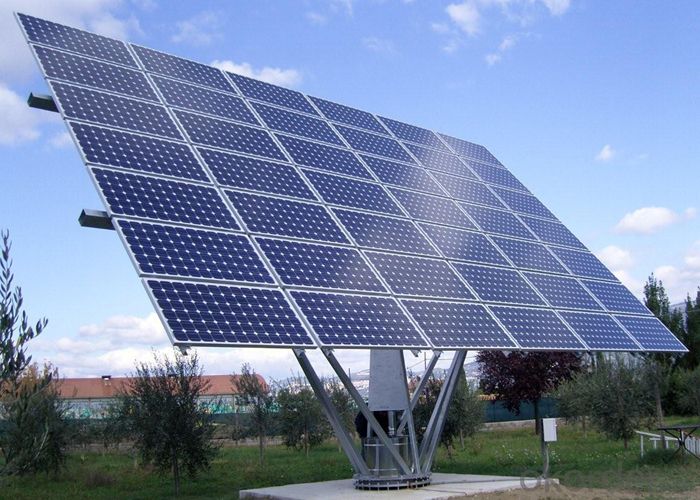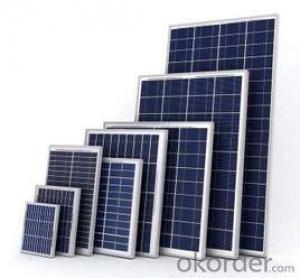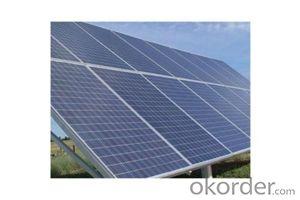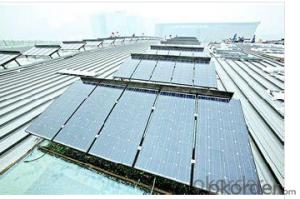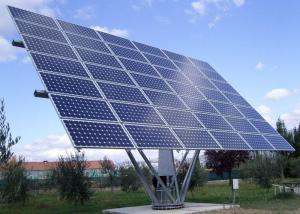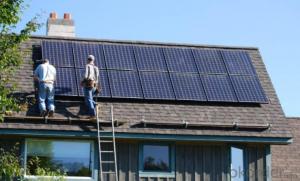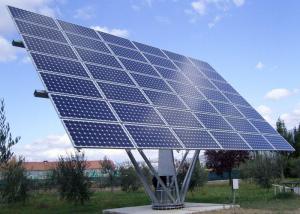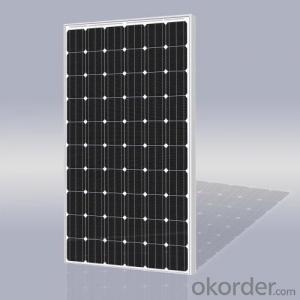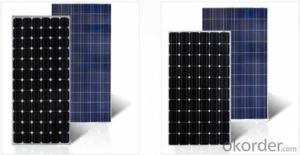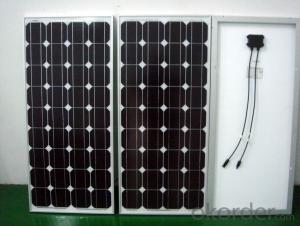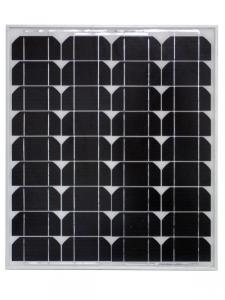Pink Solar Panels Poly 80W Solar Panel CE/IEC/TUV/UL Certificate
- Loading Port:
- Shanghai
- Payment Terms:
- TT OR LC
- Min Order Qty:
- 1000 watt
- Supply Capability:
- 100000000 watt/month
OKorder Service Pledge
OKorder Financial Service
You Might Also Like
Quality and Safety of Poly 80W-100W Solar Panel CE/IEC/TUV/UL Certificate
1. Rigorous quality control meets the highest international standards.
2. High-transmissivity low-iron tempered glass, strong aluminium frame.
3. Using UV-resistant silicon.
4. IS09001/14001/CE/TUV/UL
Warranties of Poly 80W-100W Solar Panel CE/IEC/TUV/UL Certificate
1. 10 years limited product warranty
2. 15 years at 90% of the minimal rated power output
3. 25 years at 80% of the minimal rated power output
Technical date of Poly 80W-100W Solar Panel CE/IEC/TUV/UL Certificate :
ITEM NO.: | Mono 125*125 cell ,36pcs . Power range from 80Wp-100Wp | ||||||||
Maximum Power(W) | 80 | 85 | 90 | 95 | 100 | ||||
Optimum Power Voltage(Vmp) | 17.81 | 17.89 | 17.94 | 17.99 | 18.06 | ||||
Optimum Operatige Current(Imp) | 4.78 | 4.91 | 5.12 | 5.35 | 5.59 | ||||
Open Circuit Voltage(Voc) | 21.98 | 22.05 | 22.14 | 22.28 | 22.45 | ||||
Short Circuit Current(Isc) | 4.95 | 5.15 | 5.36 | 5.65 | 5.84 | ||||
Solar Cell: | 125*125 Mono | ||||||||
Number of Cell(pcs) | 4*9 | ||||||||
Brand Name of Solar Cells | JA Cell, Bluesun Cell | ||||||||
Size of Module(mm) | 1580*808*35 | ||||||||
Caple & Connector Type | Pass the TUV Certificate | ||||||||
Frame(Material Corners,etc.) | Aluminium-alloy | ||||||||
Backing (Brand Type) | TPT | ||||||||
Cell Efficiency for 100W(%) | 15.8% | ||||||||
Weight Per Piece(KG) | 12.0KG | ||||||||
FF (%) | 70-76% | ||||||||
Junction Box Type | Pass the TUV Certificate | ||||||||
Tolerance Wattage(e.g.+/-5%) | ±3%, or 0-3% | ||||||||
Front Glass Thikness(mm) | 3.2 | ||||||||
Temperature Coefficients of Isc(%) | +0.04 | ||||||||
Temperature Coefficients of Voc(%) | -0.38 | ||||||||
Temperature Coefficients of Pm(%) | -0.47 | ||||||||
Temperature Coefficients of Im(%) | +0.04 | ||||||||
Temperature Coefficients of Vm(%) | -0.38 | ||||||||
Temperature Range | -40°C to +85°C | ||||||||
Surface Maximum Load Capacity | 2400Pa | ||||||||
Allowable Hail Load | 23m/s ,7.53g | ||||||||
Bypass Diode Rating(A) | 12 | ||||||||
Warranty | 90% of 10 years,80% of 25 years. | ||||||||
Standard Test Conditions | AM1.5 1000W/ 25 +/-2°C | ||||||||
Packing | carton or pallet | ||||||||
1*20' | 25 Pallets / 450pcs | ||||||||
1*40'STD | 25 Pallets / 100pcs | ||||||||
Diagram of Poly 80W-100W Solar Panel CE/IEC/TUV/UL Certificate

Standard production line of Factory
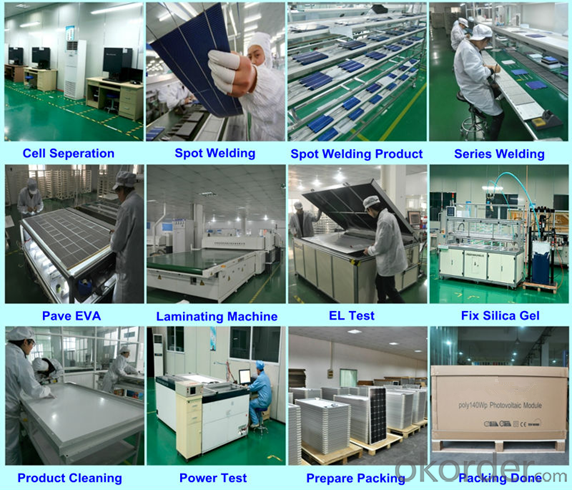
Packaging of Poly 80W-100W Solar Panel CE/IEC/TUV/UL Certificate
u Normally packing: 1pc/2pcs/3pcs/10pcs/25pcs per carton
u Individual packing requirement is acceptable.
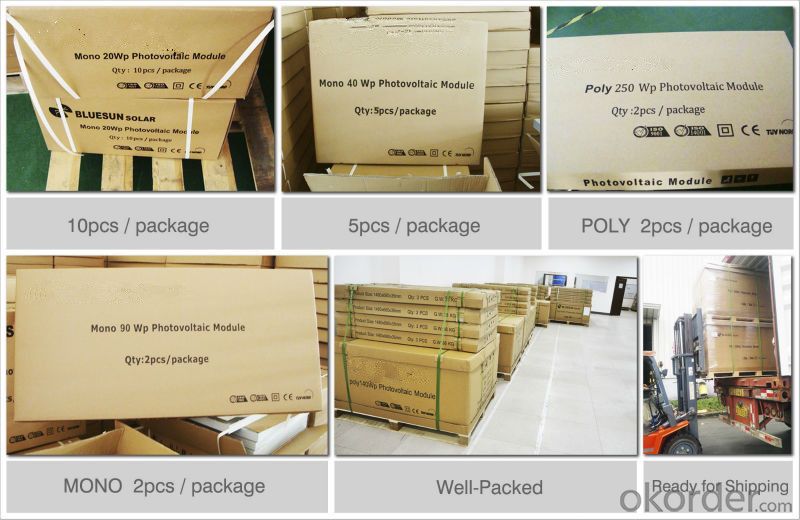
Shipping of Poly 80W-100W Solar Panel CE/IEC/TUV/UL Certificate
By Sea | Delivery from Shanghai or Ningbo seaport |
By Air | Departure from Shanghai Pudong Airport |
By Express | Post by DHL, EMS, UPS, TNT. |
FAQ of Poly 80W-100W Solar Panel CE/IEC/TUV/UL Certificate
(1) Can you offer the test report of the module?
Sure. All the solar modules must pass necessary tests including EL test and ultra-red test and other visual test of the apperance, and the test report presents all the detailed data of the modules.
(2) How to confirm about the quantity and the type of solar module?
It depends on the solar system where you want to put into use the solar modules. We have experienced engineers to design for your order and you need to give more information to fix the details.
- Q: Can solar panels be installed on a restaurant or food establishment?
- Yes, solar panels can definitely be installed on a restaurant or food establishment. In fact, many restaurants and food establishments are increasingly adopting solar energy as a sustainable and cost-effective solution to power their operations. By installing solar panels, these establishments can reduce their carbon footprint and save on energy costs in the long run.
- Q: I thinking of buying a few solar panels, can anyone who had bought solar panels or sells them give me a price for them. I dot wanna over spend on them...
- Solar okorder or another site to compare prices.
- Q: Hi, I have in my sailboat 2 2 V batteries. I would like to buy solar panel(s) in order to recharge them. As i am in mexico and there is always high sun . i think it is a good idea.Usage of the batteries is very light . I have found 5-2V pannels with 80mA that fit in the sailboat. I want to know if and how i can have like 5 to 0 of them set together to charge the batteries and what other material would i need.also, i would like to know what happend if the pannels only send on 5V in a 2 V battery? Is it still charging but on 40 % of the capacity a 2 v pannel would charge or its just not doing nothing ?
- Taken at face value, it would take about 55 hours to re-charge a dead flat battery. However, you don't get 24hrs/day sunlight. Even worse, the output from a panel is only maximum when the sun is at 90 degrees to the surface. Let's assume you can find some way to track the sun. No battery should be allowed to discharge below about 50% so we can halve the recharge time. I would say about 4 days.
- Q: what are solar panels?
- every time i hear the word solar panels i think those large or small flat shiny black or grey surfaces that absorb the sunlight and convert the heat and so on so forth into energy like electricity But ...i dont know how they fully work really so, i dunno.
- Q: Can solar panels be installed on wearable devices?
- Yes, solar panels can be installed on wearable devices, but their effectiveness may be limited due to the small surface area available for solar absorption. Additionally, the amount of energy generated may not be sufficient to power the wearable device continuously. However, advancements in solar technology may make it more feasible and efficient in the future.
- Q: I want to add solar panels to my home. I was looking online and it seems there are so many different kinds! How does it hook up to the electrical grid? How much do I need for a 2000 sf home?
- Here is a site to help
- Q: Can solar panels be installed on windows or glass surfaces?
- Yes, solar panels can be installed on windows or glass surfaces. These are known as building-integrated photovoltaics (BIPV) and are designed to replace traditional building materials such as windows, skylights, or facades with solar panels. BIPV systems are a great way to generate electricity while maximizing space and utilizing underutilized surfaces.
- Q: What are the supplies needed in a solar panel field, i know there are the panels. But what about batteries, and converters. Possibly other things, and how many will i need, for a certain amount of panels?
- I am interested also and plan on following up on the information in the next couple of weeks
- Q: Looking to install solar panels in my house.
- Wholesale prices for BP solar panels range between $335 for the 40 watts panel to $835 for the 70 watts panel. Here's a brief listing of wholesale prices for BP solar models: - BP340J solar panel (40 watts) @ $335 - BP350J solar panel (50 watts) @ $37 - BP375J solar panel (80 watts) @ $504 Right now I'm getting a series of 50 watt (7.5 volts) panels installed in my house. It's a start to reduce dependence on electricity bills and try get some tax rebates as well.
- Q: How do solar panels affect the insurance premiums of a property?
- Solar panels can potentially affect insurance premiums of a property. While it varies depending on the insurance provider and region, installing solar panels may increase the overall value of a property, which could result in a higher replacement cost in case of damage or loss. However, some insurance companies offer specialized policies or discounts for homes with solar panels due to their positive impact on energy efficiency and reduced environmental risks. It is best to consult with insurance providers to understand their specific policies and how solar panels may impact premiums.
Send your message to us
Pink Solar Panels Poly 80W Solar Panel CE/IEC/TUV/UL Certificate
- Loading Port:
- Shanghai
- Payment Terms:
- TT OR LC
- Min Order Qty:
- 1000 watt
- Supply Capability:
- 100000000 watt/month
OKorder Service Pledge
OKorder Financial Service
Similar products
Hot products
Hot Searches
Related keywords
